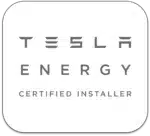Commercial Solar Now and In 2023 – What you need to know to lock in lower costs
The Inflation Reduction Act will help commercial entities lower costs for years to come. Commercial solar is one of the safest investments you can make. It will literally pay for itself in utility savings and tax benefits. That means lower operating costs which allow your company to compete from a better financial position. With the Inflation Reduction Act, the timing, or when you get started on solar, is important. It also restored the 30% tax credit was retroactively restored in 2022 and for 10 years, but there are changes to be aware of.
With the economic downturn, there’s been an uptick in commercial projects so no matter what size project you have, it’s advisable to find out what solar can do for you now, so you can start planning and preparing.
If your organization is a large energy user and you will be planning for a megawatt or more of solar capacity, you need to get started now to save money in 2023 with a Safe Harbor investment.
Make a ‘Safe Harbor’ Investment for 1MW+ Commercial Solar Planned in 2023
Making an investment in a planned commercial installation that will be 1MW or larger will protect you from labor increases that are coming under the Inflation Reduction Act. This is called a ‘safe harbor’ investment. An investment now will lock in a lower labor rate for next year.

Here’s how it works-
Safe Harbor payments are geared at starting the work on a project in one calendar year to lock in a benefit that would go away or decline in the next calendar year. Before now, this has been used to lock in a higher tax credit. Now, the tax credit is locked in for the next 10 years. But there is a change that could increase the cost of a commercial installation that is coming next year.
The change is a labor requirement–
For commercial projects started in 2023 after a 60 day window from the Treasury Department issuing it’s guidance, commercial solar installations that are 1MW or larger will be required to pay prevailing wage for all labor. This could be a big increase in project costs.
That’s were safe harbor comes into play.
To lock in current requirements and benefits prior to prevailing wage being mandated, a project needs to have made 5% progress. Now, that progress could be in paying for engineering and/or materials for the project.
Making that 5% investment in 2022 can save a lot of money in 2023. To talk with someone on our team, click the request a quote button below and fill in the information and a commercial solar specialist will reach out to talk.













